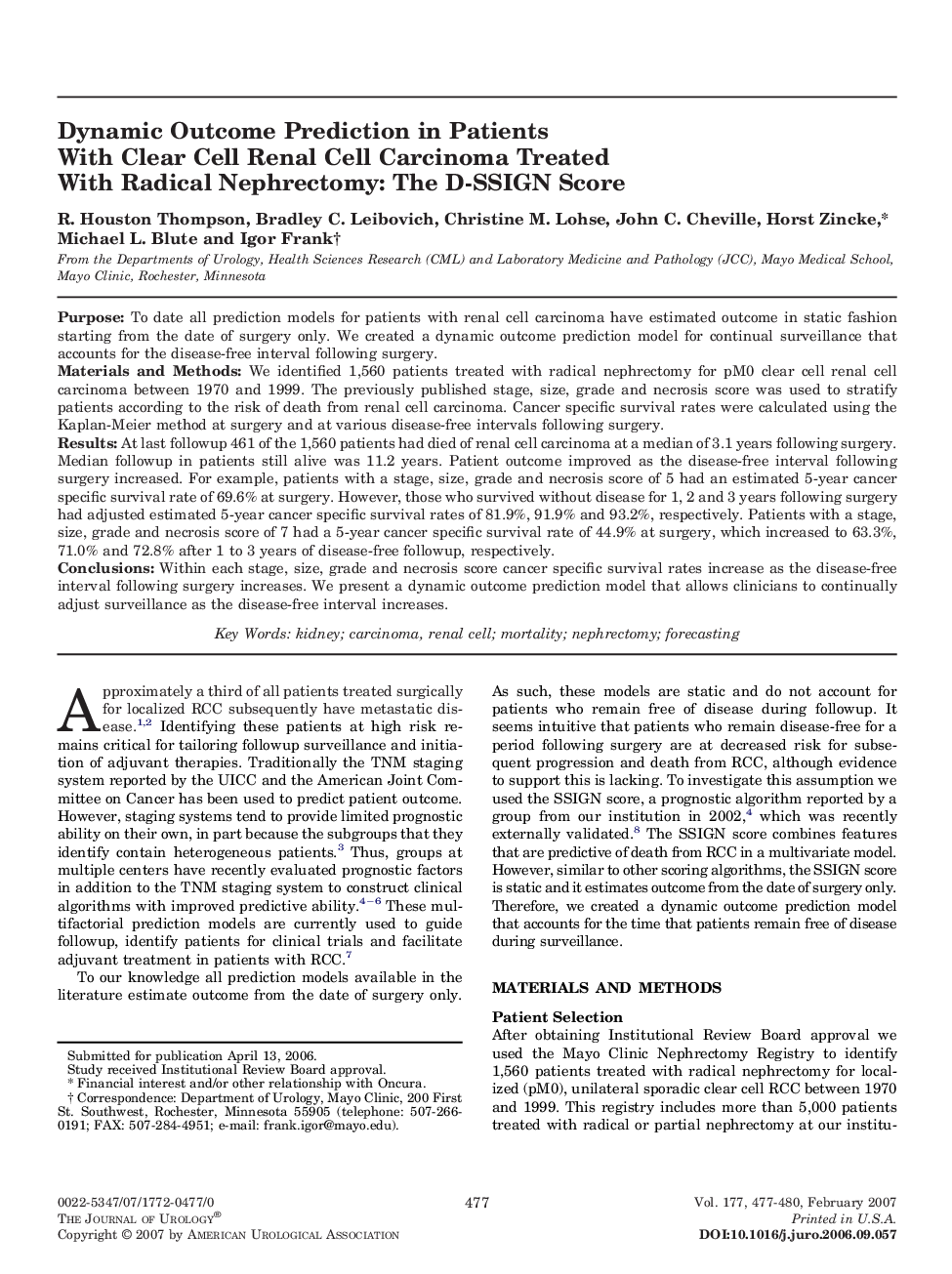| کد مقاله | کد نشریه | سال انتشار | مقاله انگلیسی | نسخه تمام متن |
|---|---|---|---|---|
| 3875438 | 1599013 | 2007 | 4 صفحه PDF | دانلود رایگان |

PurposeTo date all prediction models for patients with renal cell carcinoma have estimated outcome in static fashion starting from the date of surgery only. We created a dynamic outcome prediction model for continual surveillance that accounts for the disease-free interval following surgery.Materials and MethodsWe identified 1,560 patients treated with radical nephrectomy for pM0 clear cell renal cell carcinoma between 1970 and 1999. The previously published stage, size, grade and necrosis score was used to stratify patients according to the risk of death from renal cell carcinoma. Cancer specific survival rates were calculated using the Kaplan-Meier method at surgery and at various disease-free intervals following surgery.ResultsAt last followup 461 of the 1,560 patients had died of renal cell carcinoma at a median of 3.1 years following surgery. Median followup in patients still alive was 11.2 years. Patient outcome improved as the disease-free interval following surgery increased. For example, patients with a stage, size, grade and necrosis score of 5 had an estimated 5-year cancer specific survival rate of 69.6% at surgery. However, those who survived without disease for 1, 2 and 3 years following surgery had adjusted estimated 5-year cancer specific survival rates of 81.9%, 91.9% and 93.2%, respectively. Patients with a stage, size, grade and necrosis score of 7 had a 5-year cancer specific survival rate of 44.9% at surgery, which increased to 63.3%, 71.0% and 72.8% after 1 to 3 years of disease-free followup, respectively.ConclusionsWithin each stage, size, grade and necrosis score cancer specific survival rates increase as the disease-free interval following surgery increases. We present a dynamic outcome prediction model that allows clinicians to continually adjust surveillance as the disease-free interval increases.
Journal: The Journal of Urology - Volume 177, Issue 2, February 2007, Pages 477–480